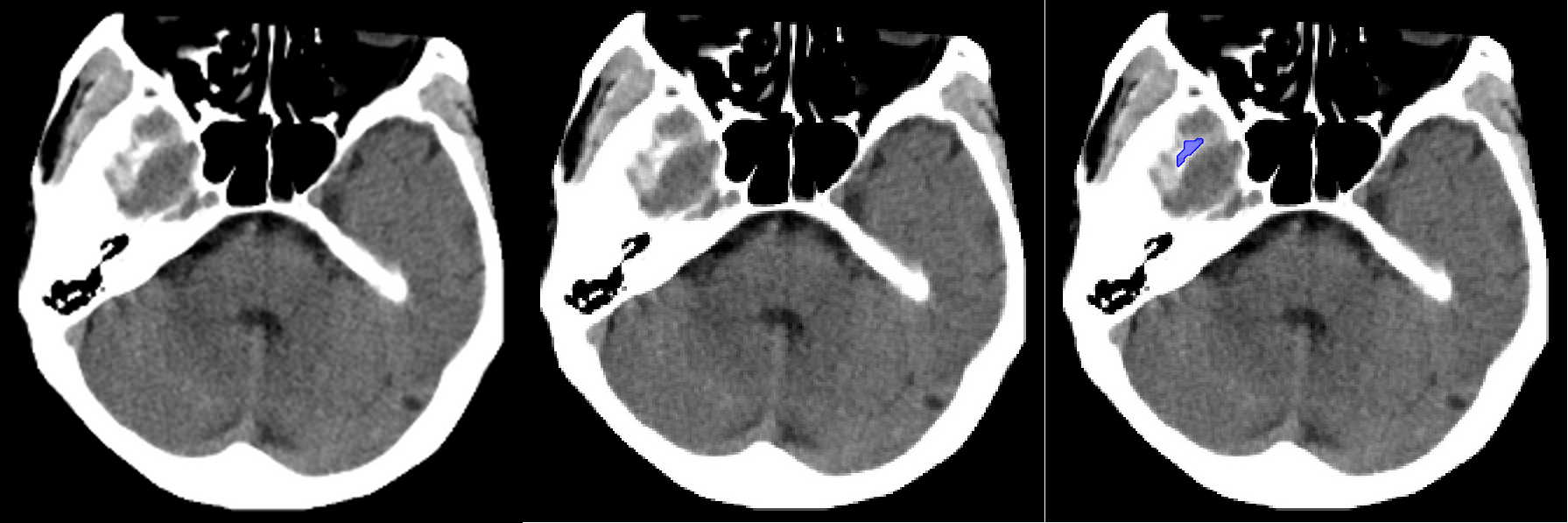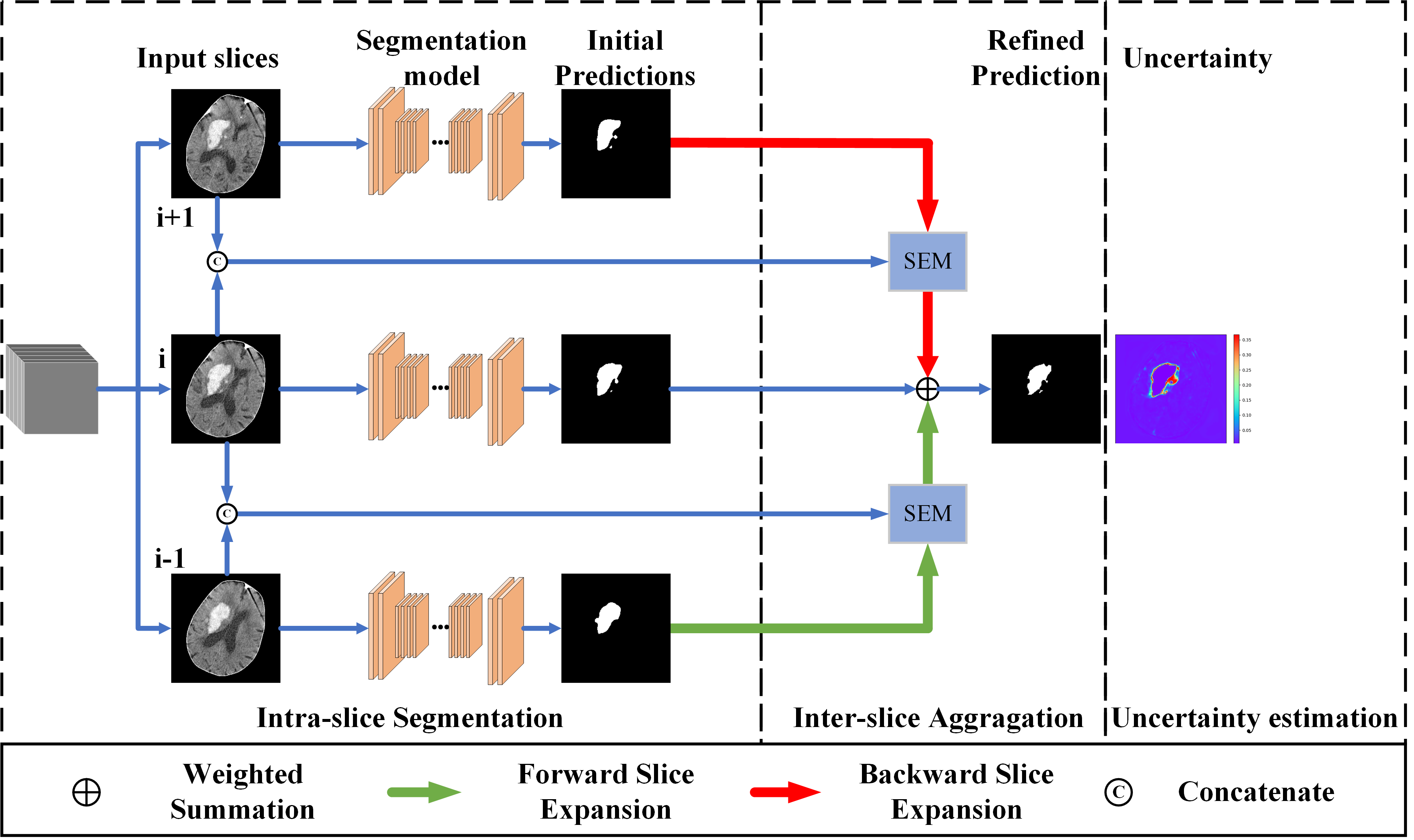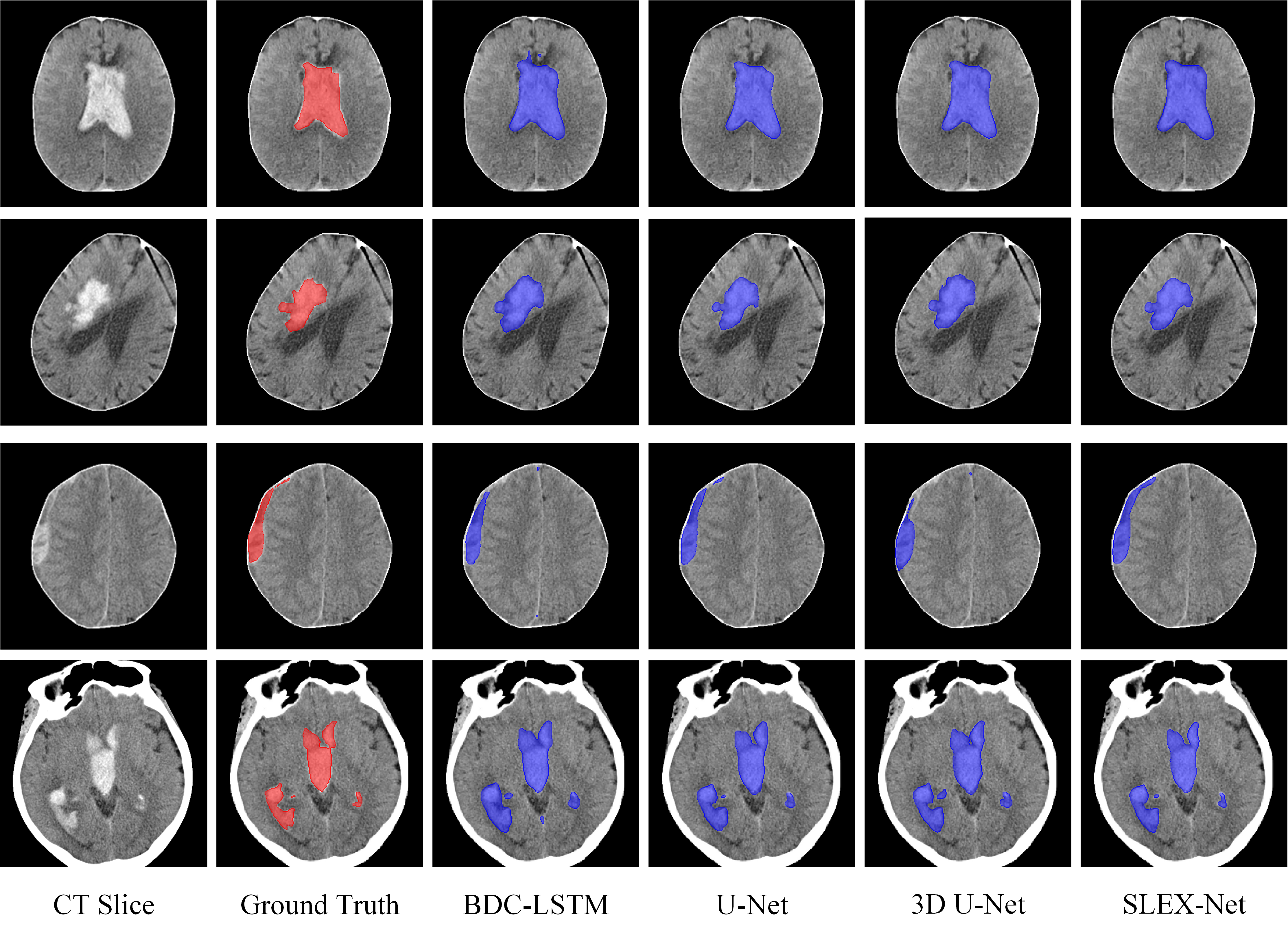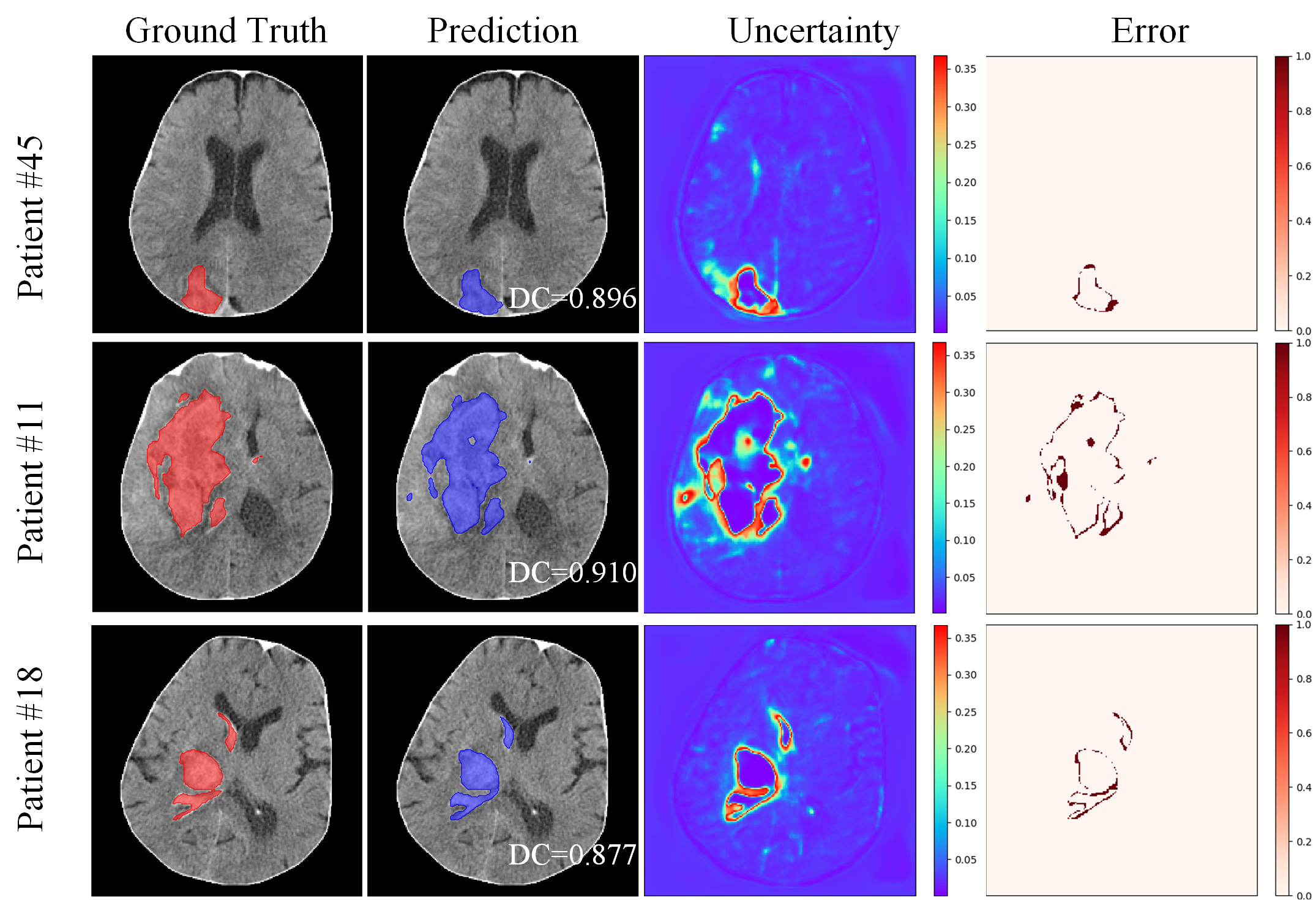Official Pytorch Code for the paper Hematoma Expansion Context Guided Intracranial Hemorrhage Segmentation and Uncertainty Estimation(Pytorch) presented at IEEE-JBHI 2022.
Input Volume............................... GroundTruth ................Predictions
Accurate segmentation of the Intracranial Hemorrhage (ICH) in non-contrast CT images is signi cant for computer-aided diagnosis. Although existing methods have achieved remarkable results, none of them ever incorporated ICH's prior information in their methods. In this work, for the rst time, we proposed a novel SLice EXpansion Network (SLEX-Net), which incorporated hematoma expansion in the segmentation architecture by directly modeling the spatial variation of hematoma expansion. Firstly, a new module named Slice Expansion Module (SEM) was built, which can effectively transfer contextual information between two adjacent slices by mapping predictions from one slice to another. Secondly, to perceive label correlation information from both upper and lower slices, we designed two information transmission paths: forward and backward slice expansion. By further exploiting intra-slice and inter-slice context with the information paths, the network signi ficantly improved the accuracy and continuity of segmentation results. Moreover, the proposed SLEX-Net enables us to conduct an uncertainty estimation with one-time inference, which is much more efficient than existing methods. We evaluated the proposed SLEX-Net and compared it with some state-of-the-art methods. Experimental results demonstrate that our method makes signi cant improvements in all metrics on segmentation performance and outperforms other existing uncertainty estimation methods in terms of several metrics.
- The code has been written in Python (3.6) and requires PyTorch (version 1.1.0)
- Install the related packages by transferring our conda environment
conda env create -f requirements.yamlor by runbash run.sh
We utilized a in-house intracranial hemorrhage segmentation dataset, which will be released in the future,
To match the input data of our proposed network, you have to make some arrangement of the original data.
- Image preprocessing, mainly "Skull Stripping" operations :
- Generate
h5files for training, validation and testing.
python src/DataTransfer.pyBesides, you have to split the data into training/ validation/ test set. In our case, we simply choose the first 180 subjects as the training set and the next 20 subjects as the validation set, the last 50 subjects as the test set.
notice : folder structure of the training , validation or testing data should be like this:
$SEG_ROOT
├── data
│ ├── data_train
│ │ ├── 1.h5
│ │ ├── ...
│ │ └── 100.h5
│ └── data_val
│ | ├── 1.h5
│ | ├── ...
│ | └── 100.h5
| |── data_test
│ ├── 1.h5
│ ├── ...
│ └── 100.h5
(1) Edit config.py so as to be consistent with your local environment, especially pre_trained_model,
pre_trained_SEM_model and data_path. Once you download the dataset and the pre-trained model, you specify the corresponding paths to those items.
(2) Run src/train_hybrid_single_out_consistency.py in the command line or in the python IDE directly.
python src/train_hybrid_single_out_consistency.py(1) Edit config.py so as to be consistent with your local environment, especially ckp_test
and data_path. The data_path is the same as training phase , the ckp_test is the path of the saved model of our network.
(2) Run src/test_single_consistency.py in the command line or in the python IDE directly.
python src/test_single_consistency.pyTo illustrate the results of the proposed method, we made a qualitative analysis of the segmentation results, which can be seen as follows:
The uncertainty estimation results are as follows:
If you meet any questions when you run this code , please don't hesitate to raise a new issue in the repository or directly contact us at lxycust@gmail.com.
Please consider citing this project in your publications if it helps your research. The following is a BibTeX reference. The BibTeX entry requires the url LaTeX package
@ARTICLE{9511297,
author={Li, Xiangyu and Luo, Gongning and Wang, Wei and Wang, Kuanquan and Gao, Yue and Li, Shuo},
journal={IEEE Journal of Biomedical and Health Informatics},
title={Hematoma Expansion Context Guided Intracranial Hemorrhage Segmentation and Uncertainty Estimation},
year={2022},
volume={26},
number={3},
pages={1140-1151},
doi={10.1109/JBHI.2021.3103850}}


